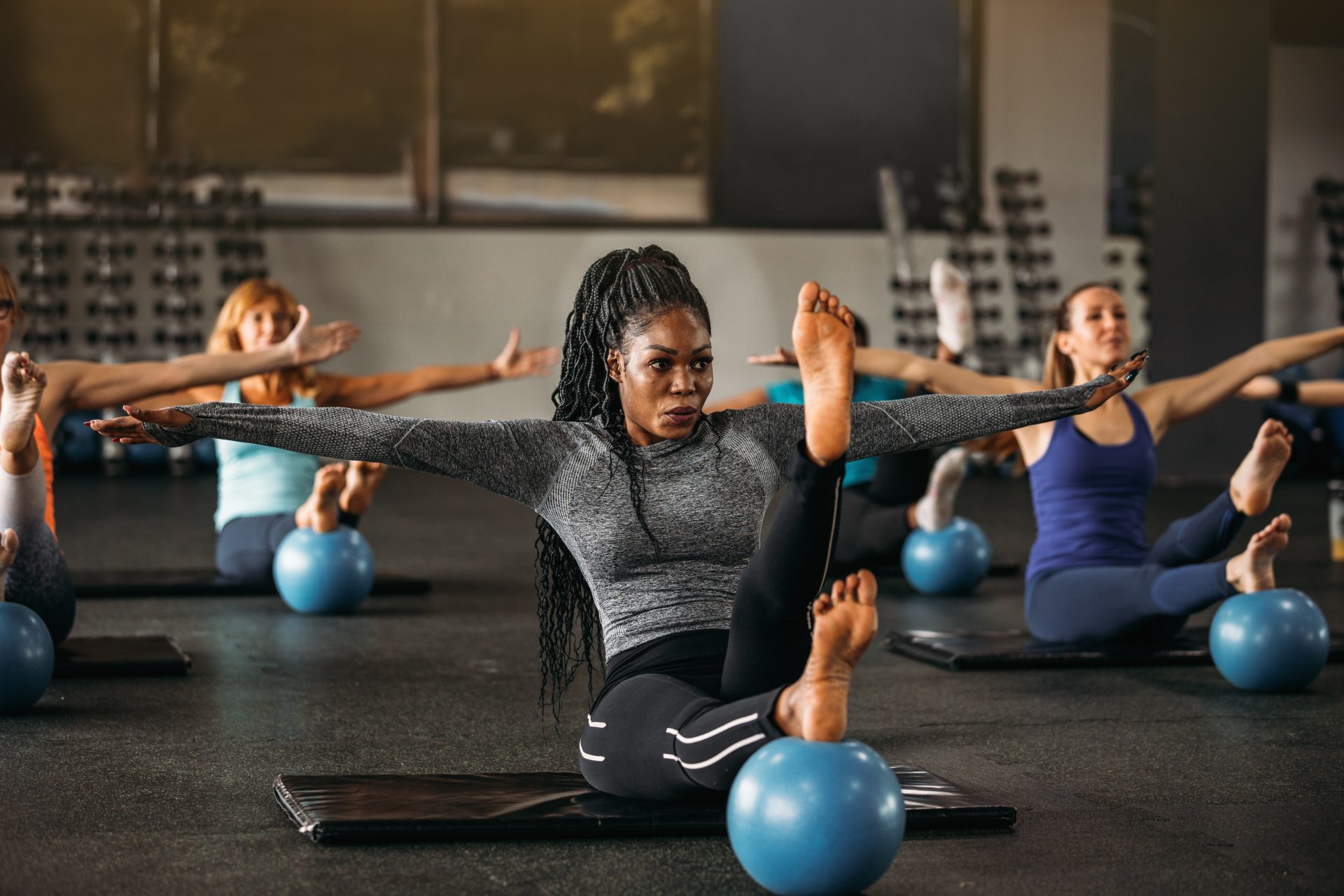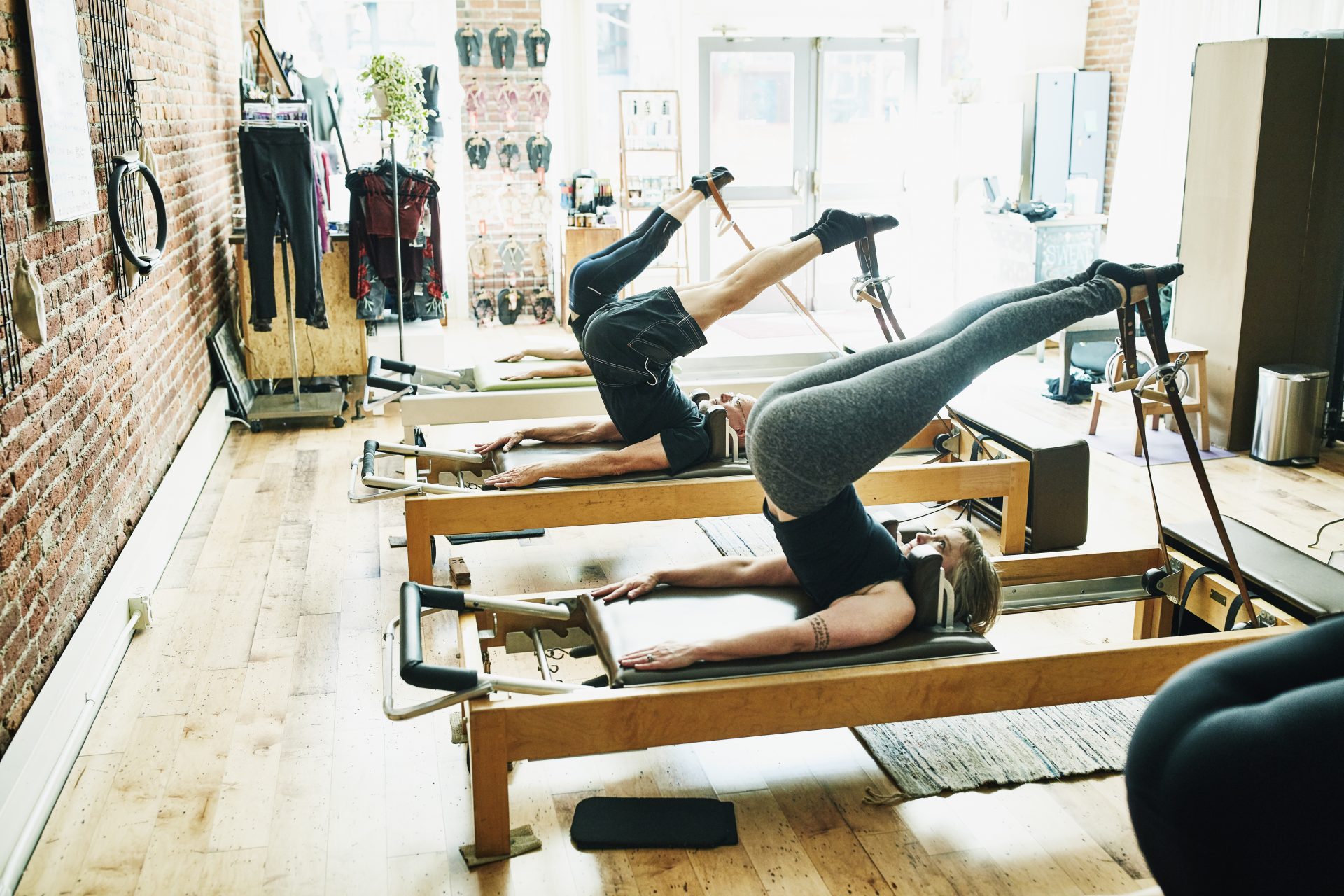Interested in starting pilates? Then here are a bunch of tips to get you in the right frame of mind for managing that famous pilates burn.
I first stumbled across pilates when I lived in Chicago, fresh out of university. Each morning, I walked past a pilates studio on the way to my nannying job, and everyone taking classes there looked expensive: fancy workout clothes, pricey jewellery, costly hair dos.
What I didn’t realise then is that pilates is for everyone. Sure, some studios might attract people on higher incomes, but if your budget doesn’t allow for classes this year, there are some great (and free) videos online that offer basic pilates instruction.
You may also like
Pilates hundred is the best core-building exercise for posture, according to a trainer
While pilates may feel like a newer form of exercise, it’s been around since the 1920s, when its German founder Joseph Pilates first brought the technique to the US to help rehabilitate soldiers following the first world war. Over the decades, the fitness practice has grown in popularity; here in the UK, a recent poll found that people preferred it to yoga.
Pilates isn’t just about tight abs and flexibility; the NHS lauds it for a host of health benefits including improved posture, increased strength, enhanced muscle tone and greater joint mobility.
If you’ve never done it before, the idea of balancing and burning may seem intimidating, but it doesn’t have to be. Here are 15 tips from pilates masters and experts to jump-start your pilates journey this year.
A beginner’s guide to pilates
Get excited
While this isn’t a pre-requisite by any means, starting something new often takes a bit of self-motivation and stick-to-it-ness. Set yourself up for success by getting excited for this new practice. You might want to write out a list of intentions for your pilates journey, or spend a bit of time researching local pilates teachers on Instagram for a taste of what to expect.
Do your homework
And that leads us nicely on to our next tip: research. Dr Lisa Marie Bernardo, a certified pilates instructor since 2000, knows her craft, and she tells Stylist that it’s important for newbies to do their homework: “Check the instructor’s credentials to assure they have completed a pilates method alliance-approved training course. Read the instructor and studio bios to ensure that your fitness goals align with their services. Try a class or two before committing to purchasing a package or block of classes. You may need to try a few different instructors and studios before you find the environment best suited for your fitness needs.”

You don’t need to be flexible
Pilates teacher Lottie Murphy, founder of Lottie Murphy Pilates, insists that you don’t need to be flexible to succeed: “I truly believe that pilates is for everyone,” she says. “It’s movement in a way that is kind to our bodies, functional and pain-free. You do not need to be flexible.” She explains that pilates is different from yoga in that it doesn’t require holding poses or stretches for long periods of time but still works to improve the range of movement we have at the joint level. “That happens, typically, through doing umpteen reps of the same movement.”
Inform your instructor of any injuries or issues
Dr Bernardo also recommends: “If you are returning to exercise after an absence, injury, illness or pregnancy, tell your instructor so the instructor can better cue you in the exercises and select exercises that are right for you”.
Know the six core pilates principles
Joseph Pilates came up six core principles: concentration, control, centring, flow, precision and breathing. Know them, learn them, live them, love them – and watch your pilates practice (and possibly other parts of your life) flourish as a result.
You may also like
Fitness classes: “I tried reformer pilates for my core, but is it as scary as it looks?”
Wear grip socks
Many studios suggest you wear grip socks to practise in, rather than standard socks or bare feet. Grip socks are important, primarily for injury prevention. Regular socks may cause you to slip and potentially hurt yourself, but those with grips give traction and prevent slippage. And while there’s something blissful about being barefoot in a studio, some places may ask you cover up your feet to avoid splinters, slipping or for basic hygiene.
Know your type
There are two categories in pilates: mat and reformer. In a mat class, you’ll use a thick mat like a yoga mat to cushion pressure points. During a reformer session, you’ll be working on big, sliding machines. The reformer has a stationary foot bar and resistance pulleys and it’s at these classes where there tends to be a steeper learning curve than elsewhere, so it’s worth plumping for a beginner session even if you’ve done yoga and mat-based practices before. “Starting on the pilates equipment or mat is a personal choice based on the availability of lessons and cost,” says Dr Bernardo.
Hydrate
While I know water is never the most thrilling thing to drink, your skin, digestion and body will all thank you, especially during your pilates class. It may be a low-impact exercise, but it’s still possible to become dehydrated burning through those reps, so don’t be fooled into thinking that you won’t sweat or need to supplement your liquid intake.

Learn the basics
One simple way to boost your confidence ahead of your first class is to hop on to YouTube and try some free pilates sessions on there.
Adrianne at Westside Pilates in New York City tells us: “It’s best to start with private sessions to learn the basic exercises and more about your body. Search for a well-established classical pilates instructor to get your fundamentals.” Of course, ‘private’ is going to look different to different budgets – and arguably, there’s nowhere more private than your living room floor.
Jump right in
Once you’re in the studio, however, you’ve just got to go for it. Everyone was a beginner once so don’t let nerves get the better of you. Lisa Solomon, founder and CEO of Los Angeles-based The Studio (MDR), explains: “It takes (going to pilates) about five to 10 times before you stop feeling like a fish out of water.” So push through and try to give it a fair go.
Listen to your instructor
“Instructors are there to guide you through the moves and offer modifications,” says Solomon. Remember: you’re paying them, so if you don’t understand something or you’re finding something too hard or easy, they are there to help. It’s in their interests to help. And, as in any other exercise realm, pilates has its own set of terminology so it’s worth listening out to key phrases. Expressions like “peel your spine” may sound like something from a horror movie, but it’s just an expression to describe slowly curling your back off the ground.
You may also like
Pilates training: “this is how 5 minutes of pilates every day for 2 weeks changed my body”
Wear tight layers
We know that wearing decent kit can make us feel more confident in the gym or out running, and the same is true in pilates. Tanks and suitable leggings will give you a greater range of motion than loose clothes might, while tighter clothing also allows your instructor to look at your alignment. On a reformer, extra fabric might get stuck or create some kind of hazard so you want to avoid any potential for accidents. If you feel self-conscious in crop tops or tight leggings, try a pair of cycling shorts under a medium-fit T-shirt.
Take a break and be patient
When you need a breather, take a break. Sometimes the most productive thing you can do is to rest. Murphy explains that she regularly tells her pupils to “be patient”. Results from pilates come when you work consistently. “I always say to my clients: ‘10 minutes a day is way better than one hour every month,’” she says.’ If you’re new to mindful movement, then you might find the pace quite slow, but this is where the magic happens – it’s the time under tension that forces the muscles to work hard in pilates. Murphy points to the fact that the pilates method was originally named Contrology, or the study of control. Dr Bernardo agrees that commitment and persistence matter: “Don’t give up; keep trying,” she says.
Ditch the comparison game
It’s true what they say: comparison really is the thief of joy. With that in mind, Solomon advises against comparing yourself to anyone else in your studio who may well have been practising longer or have a body that functions in a different way to yours. “I always say for anyone just starting out: remember that everybody is different, so jump in and try not to compare yourself to others in a class.”
Enjoy it!
Pilates is a refreshing, empowering and strengthening activity that can hone inner and outer strength and poise. For many people, a pilates session can make them feel mentally and physically stronger.
Improve your mobility before your first pilates class with one of our 15-minute classes, over on the Strong Women Training Club.
Images: Getty
Source: Read Full Article
